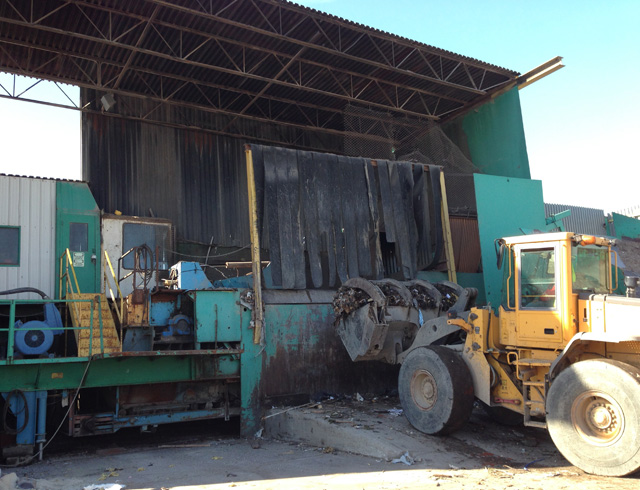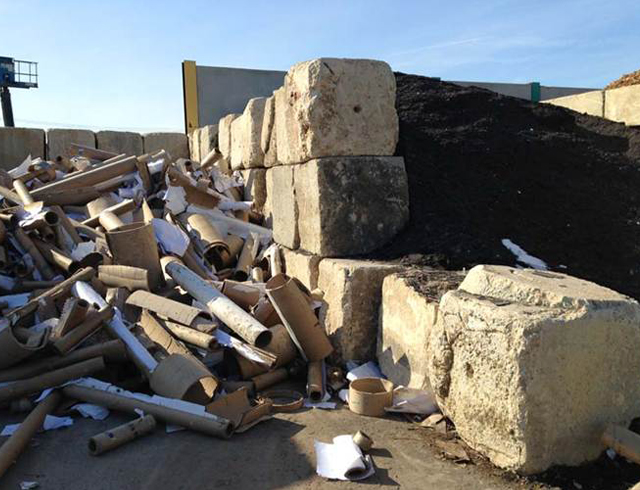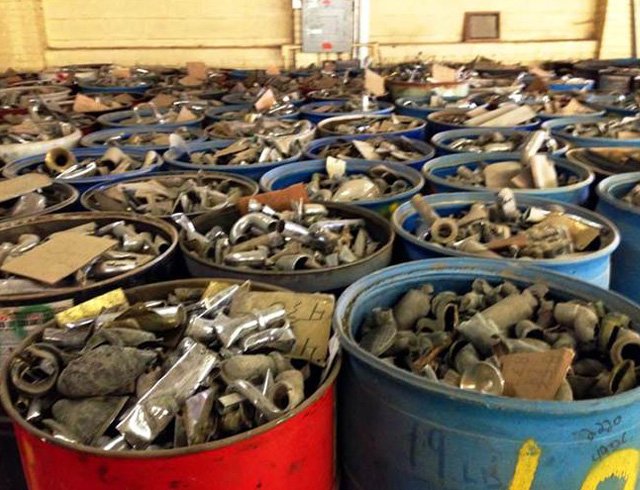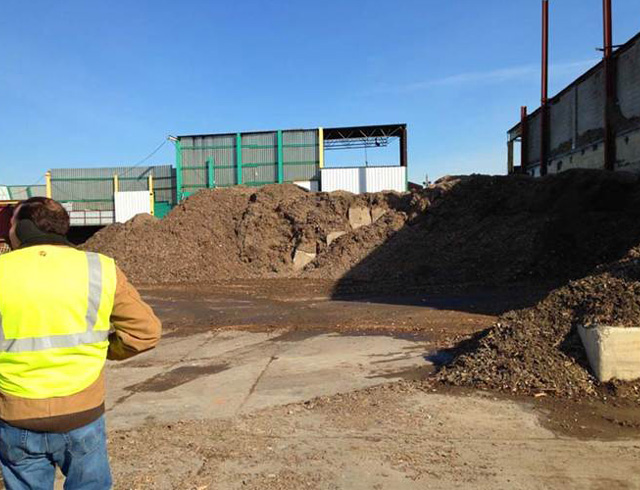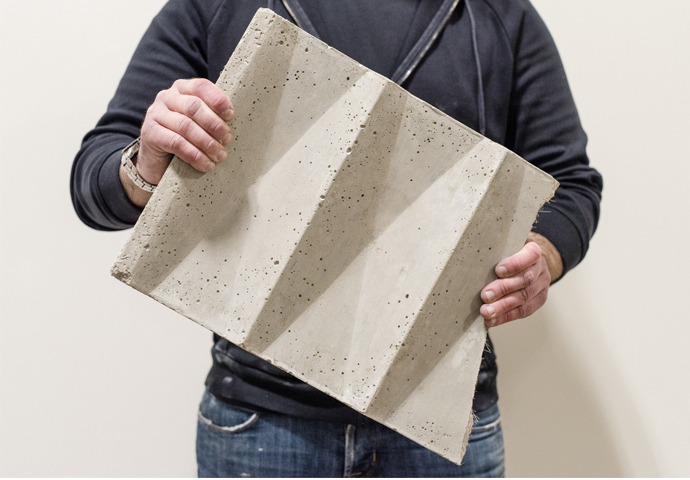Recycling Construction Waste
A shredder hopper is loaded at Richard S. Burns & Company Inc. Our visit to this local facility allowed us to capture a series of images of waste recycling and recovery processes.
An important aspect of environmental sustainability is the careful management of construction waste through recycling or landfill diversion. Normally, the contractor specifies a waste management company responsible for dumpsters on site, transportation, sorting, processing, landfill diversion, and accounting. In order to ensure that design and construction methods efficiently integrate with the processing of construction waste, KieranTimberlake recently made a visit to a local waste recycling and recovery facility.
Richard S. Burns & Company Inc. is a family-owned business that has been in operation for over 40 years. The company pioneered landfill diversion techniques long before the practice was commonplace because of its ability to monetize the recycling streams. It operates a 10-acre facility in North Philadelphia and employs many individuals in the surrounding community.
Our visit helped us understand what happens once waste leaves the construction site and allowed us to see first-hand how it is repurposed into a variety of recycling streams, often achieving a landfill diversion rate of 99%.
Sorting area
Upon entering the facility, we first noticed truck scales, radiation monitors, and cameras. Prior to unloading, all material passes between two radiation monitors. Each truck is weighed and photographed, documenting the scale weight and top of load. We then entered the tipping area, where Burns' dumpsters are unloaded and waste goes through initial processing. Between the conveyor belts, grinders, loaders, and dump trucks moving around the area, this part of the facility was bustling with activity.
After initial sorting of materials such as cardboard, paper, gypsum, plastics, and asphalt shingles, the materials are moved into a stockpile, where two Caterpillar excavators work together to sort material by type and size before adding it to the conveyor. Along the raised conveyor, several workers hand-pick plastics, metal, wood, masonry, separating them from any trash and dropping them into a series of bins. The contents of these bins undergo further sorting in later stages.
Cardboard cores (left) and ground asphalt roof shingles (right)
Intermediate storage bins around the facility are used to store sorted materials before or after processing. These cardboard cores are being stored for grinding; the ground cores are later added to cardboard bales supplied to pulping plants. On the right side of the image is ground asphalt roofing shingles, which are used in Reclaimed Asphalt Shingles (RAS) or Reclaimed Asphalt Pavement (RAP) mixes. When the market for ground asphalt is soft, the material is added to Burns' patented landfill cover product.
Ferrous metals
Throughout the facility, piles of material in the intermediate or raw material stage await further processing or delivery to mills to become new products. This is a close-up view of a pile of metal removed from the waste stream that will be shipped directly to a ferrous metal smelter.
Non-ferrous metals
Non-ferrous metals, including brass, copper, aluminum, and other high-value metals seen in the image above, are removed from general waste through many sorting steps at the facility. They are then refined to achieve optimal value from recyclers. Some material is sent overseas for recycling.
Reclaimed timber
Construction debris from old homes in Philadelphia often includes quality timber. Burns & Company are working on a new project to re-saw this material and fabricate table tops and shelving.
Gypsum wall board
A significant component of demolition and construction waste is gypsum wall board, which will be ground up and used as a soil amendment that provides calcium and sulfur to plants. This is two days' worth of material; very few materials are retained on site for more than three to four days.
Earthen cover product
Any remaining materials that cannot be reused become feedstock for a component in an ADC (Alternative Daily Cover) product called Barrier®. This landfill product, shown here, is an earthen cover required for reducing the spread of dust, fire, disease vectors, and blowing debris. The material must meet a series of specifications for use as cover, including size, water absorption, and fire retardation. It is provided free of charge to regional landfills. While this material is not recycled, it is a good alternative to using non-renewable resources such as shale and soil as landfill cover.
Burns & Company green roof
Burns & Company build all of their buildings themselves, including large enclosures under which contractors unload trucks and vans of debris. Additionally, they maintain their fleet of machines, trucks, conveyors, grinders, and dumpsters on site and house their own concrete batch plant to maintain the 10”-thick concrete slab that covers the entirety of the site. We were impressed to learn that they have developed the capacity to build and cultivate their own green roof, along with proactively managing their wastewater and recycling the oil used in their machines.
The company also shared with us a sample of one of their highly detailed recycling reports, which includes the quantities of materials by type found within each dumpster on a construction site along with recycled material as a percentage of total waste.



